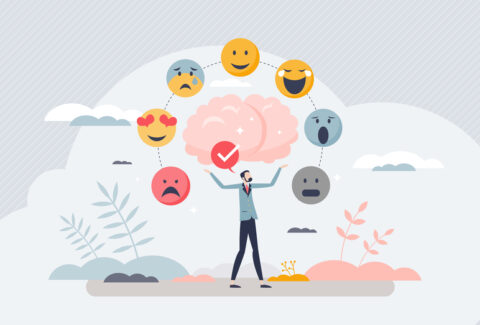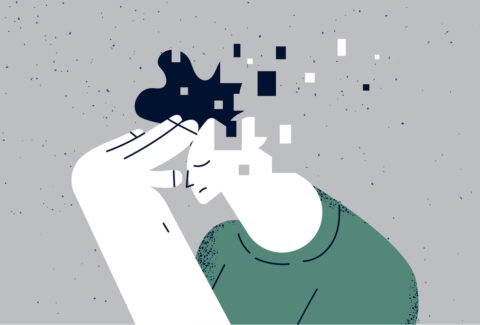Imagination-Focused Therapy (IFT): What is Imagination?

Imagination-Focused Therapy (IFT): What is Imagination?
The First Component:
Imagination is one of our cognitive functions or faculties. Such cognitive faculty is related to the production or stimulation of new objects, new sensations, and new ideas in our mind, without necessarily the input of our senses as a trigger or as an intermediary.
Imagination is that cognitive function that enables us to form experiences in our mind, allowing us to recreate our past experiences, re-narrate them, including vivid memories, imagined changes, or by completely changing the scenes, all together. In this vein, imagination is that cognitive function that is fundamental in the integration of experiences and learning, and that helps us create new knowledge that we can apply to solving problems of all sorts in our day-to-day life.
Having said that, it may be obvious to most that a cognitive function of that sort would receive special attention from the greatest thinkers of all time, notably the best scientists and philosophers that the world has gifted us with. Aristotle is, undeniably, one of these great thinkers. He was a polymath[1], which means his knowledge spanned a substantial number of subjects, and he drew from complex bodies of knowledge to solve problems. As a scientist and philosopher, Aristotle has had a significant impact on virtually almost all modern bodies of science and philosophy. And regarding the cognitive function of imagination, he defined it as the capacity for making mental images[2]. He then distinguished imagination from perception and from thinking, while acknowledging that thought was always accompanied by an image.[3] Now, understanding that thought is the Operant Factor, it becomes easy for us to appreciate how every single aspect of our lives does revolve around our cognitive function of imagination.
This keen scientific interest in imagination has continued centuries later. Scientists like Albert Einstein described the cognitive function of imagination as being “more important than knowledge.”[4] “Knowledge is limited, while imagination encompasses it all,” he added. A few decades after Einstein, modern scientists, like the cognitive neuroscientist, and Director of Mind and Development Lab at UC Davis[5], Adena Schachner, whose research focuses on the cognitive function of imagination, describes it as the capacity to mentally transcend our current circumstances; the capacity to think about possibilities, past, present, and future; and the capacity to think about possible worlds, asking the questions: What would happen if?[6]
Regardless of which discipline scientists belong to, the consensus seems to have been that our cognitive function of imagination is that process of forming new images in the mind that have not been previously experienced with the help of what has been seen, heard, or felt before, or at least only partially or in different combinations. The consensus seems to have been that our cognitive function of imagination is involved with thinking out possible or impossible outcomes of something or someone, or is an experimental partition of the mind used to develop theories and ideas based on functions[7][8]
Our cognitive function of imagination, therefore, enables us to view or interpret experiences with a variety of different lenses which we can change or shift as our mind explores further. As such, our cognitive function of imagination is fundamental to who we are. It is inherently linked with our dreams, our ideas, and with what makes us individuals. Thus, no one will ever see, understand or engage with our imagination as we will ourselves. We are connected to our cognitive function of imagination throughout life from an early age and it assists with development and growth in infancy, helping us learn the boundaries of the world we are exploring.
Lastly, we can say that our cognitive function of imagination is the creative power within each one of us. We can say that our reasoning and our rationale are embedded within it. And this means that, to paraphrase the scientific consensus, the cognitive function of imagination is not what we think; rather, it’s how we think.
Said simply, our cognitive function of imagination is us. It is who we are. It is the power within us. And it’s all a function of how we are using it. For as both Immanuel Kant[9] and Daniel Kahneman[10] described each in their own way, we do not see the world the way it is. We see the world as our instruments allow. In fact, the agreement is that technologies and science advance as our instruments exceed our imaginings.
Now, if it all boils down to how we use our imagination, how do we then go about optimally using it? The answer to this question is one of the objectives of SWEET’s Imagination-Focused Therapy Certificate Course. As a clinician, you will obtain the tools you need to help your clients. This is the reason why we are extending this invitation to all clinicians, like you, to join us, so you help your patients and clients properly reach the following 4 goals:
- Learn about their cognitive function of imagination.
- Increase their awareness on how they have been using their cognitive function of imagination
- Learn how to reap the infinite benefits of their cognitive function of imagination
- Learn how to implement the optimal use of their cognitive function of imagination in every single aspect of their lives
Are you ready to help them do just that? If so, please join us for this 4-week Certificate Course on Imagination-Focused Therapy. Click here now to enroll.
[1] Ahmed, Waqas. The Polymath: Unlocking the Power of Human Versatility. John Wiley & Sons, 2019.
[2] Ferrarin, Alfredo. “Aristotle on phantasia.” Proceedings of the Boston Area Colloquium of Ancient Philosophy. Vol. 21. 2006.
[3] Moss, Jessica. Aristotle on the apparent good: Perception, phantasia, thought, and desire. Oxford University Press on Demand, 2012.
[4] Einstein, Albert. Imagination is more important than knowledge. Arti Grafiche Recordi., 2019.
[5] https://madlab.ucsd.edu/
[6] Brady, Timothy, and Adena Schachner. “Blurring the Boundary between Perception and Memory.” Scientific American, Scientific American, 16 Dec. 2008, https://www.scientificamerican.com/article/perception-and-memory/.
[7] Murphy, Alice. “Imagination in science.” Philosophy Compass 17.6 (2022): e12836.
[8] “Imagination.” Wikipedia, Wikimedia Foundation, 11 Oct. 2022, en.wikipedia.org/wiki/Imagination. Accessed 30 Oct. 2022.
[9] Matherne, Samantha. “Kant’s theory of the imagination.” The Routledge handbook of philosophy of imagination. Routledge, 2016. 55-68.
[10] Kahneman, Daniel. “Reference points, anchors, norms, and mixed feelings.” Organizational behavior and human decision processes 51.2 (1992): 296-312.






